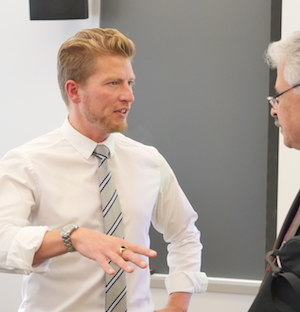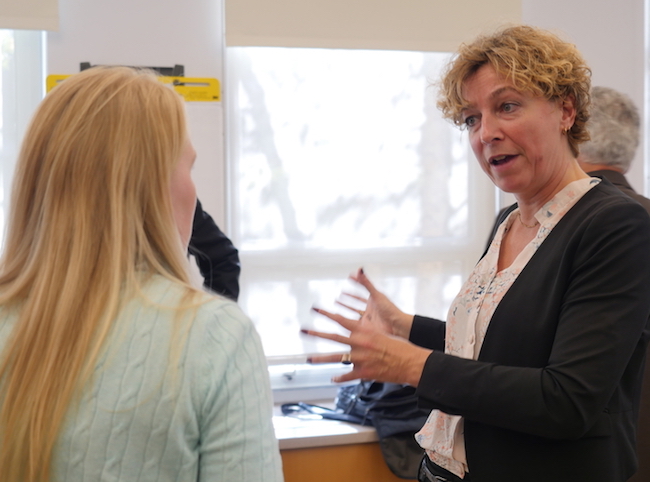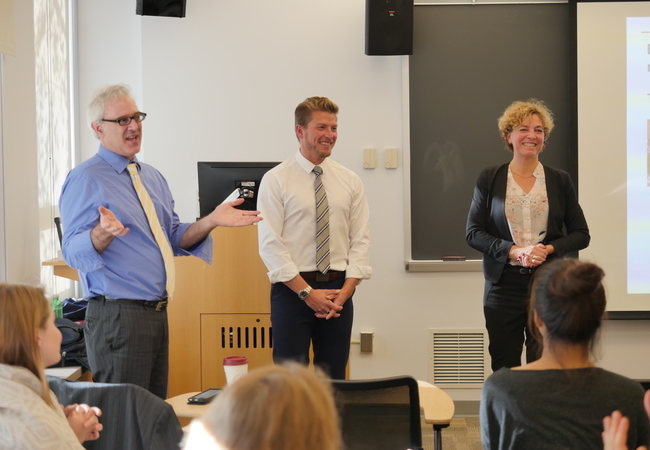Former Danish education minister discusses school reforms
In 2011, the Danish government put out an open invitation to school leaders, teachers, policy makers, and industry partners to imagine a complete overhaul of the nation’s schools, serving students aged 1 to 19.

“The group of principals I was in agreed the incremental reforms didn’t make any sense,” Drachmann said. “We agreed a radical change was needed, and it couldn’t just be in the primary school.”
Christine Antorini, a member of the Danish parliament who served as Minister of Education from 2011-2015, visited Penn GSE Nov. 8 with Drachmann to discuss how the Danish government was able to get buy-in from groups across Danish society, and the impact that had on a series of reforms.

Antorini's lecture, sponsored by Education Policy Division and the Consortium for Policy Research in Education, was inspired by a talk Penn GSE's Jon Supovitz heard her give last summer. Before visiting Penn, Antorini presented at the United Nations.
Context for reform
Compared to many countries, Danish public schools performed well in the late 2000s. So why did the government feel the need to change?
“We had good schools in the middle,” Antorini said. “Not good enough for the students with challenges, and not good enough for the best students.”
Before the 2011-2015 reforms, Danish leaders saw a school system where not enough students were developing reading and math skills, where the children of immigrants were too often marginalized, and where boys in particular were falling behind, said Antorini, who oversaw the implementation of the reforms.
After hearing input from groups across Danish society, the government rolled out their “new-Nordic” reforms. The school week was lengthened to 35 hours a week, but schools and teachers were given more freedom to structure days and weeks differently. Educators were pushed to shift lessons to a “learning-by-doing” model, and were encouraged to develop partnerships with cultural organizations, businesses, and sports clubs.
Foreign language classes were strengthened. Schools used the Danish tradition of the “green classroom” to have more classes outside the school building. At least 45 minutes of physical activity was built into every school day.
Not everything went smoothly, Antorini noted. Drachmann described the month-long teacher lock-out after a negotiation breakdown between the teachers union and local municipalities over the number of hours teachers were spending in front of the classroom. Some parents were also concerned children would be overworked by the longer school week.
Researchers are still tracking the impact of the reforms, but Antorini said the early and anecdotal evidence is positive. Ninety-five percent of Danish parents reported their children had a good school experience, and test scores have improved for girls, students from homes with limited formal education, and immigrant students.

“Together Christine and Claus provided an amazing top-down, bottom-up story of Denmark’s education system,” Supovitz said. “Learning about education improvement efforts in different countries can give us a perspective on education reforms we are grappling with here in the United States.”
